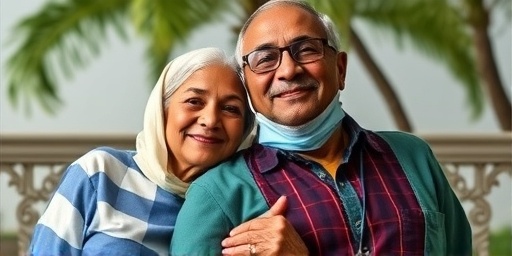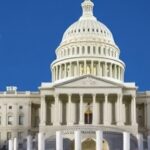New Delhi, India – In a stark indictment of America’s healthcare system, an Indian-origin couple, Rajesh and Meera Patel, has packed up their lives and returned to India after 17 years in the United States, driven out by medical expenses that devoured their savings and shattered their American Dream.
The Patels, both Non-Resident Indians (NRIs) who arrived on H-1B visas in 2006, cited skyrocketing Healthcare costs as the breaking point. A routine health scare for Rajesh escalated into bills exceeding $250,000, despite having what they thought was comprehensive insurance. “We came chasing opportunities, but left running from bills,” Meera Patel told reporters upon landing in Mumbai.
This personal saga highlights a burgeoning trend in immigration patterns, where high-skilled NRIs are reconsidering life in the United States amid unaffordable medical expenses.
Couple’s Decade-Long Climb in Tech Hits Healthcare Wall
Rajesh Patel, 48, and Meera, 46, embodied the classic NRI success story. Rajesh, a software engineer from Gujarat, landed a job at a Silicon Valley firm straight out of his master’s program in the US. Meera followed soon after, building a career in healthcare IT consulting. Over 17 years, they bought a home in suburban San Jose, raised two children – now teenagers – and even obtained green cards in 2018 after a grueling wait.
“We integrated fully – PTA meetings, soccer games, Thanksgiving dinners,” Rajesh recounted in an exclusive interview with India Today Global. Their combined income peaked at $350,000 annually, affording them a comfortable middle-class life. But beneath the surface, Healthcare costs loomed like a ticking bomb.
Family premiums for their employer-sponsored plan had risen from $12,000 in 2010 to over $28,000 by 2023, according to Kaiser Family Foundation data. Deductibles climbed to $8,000 per person, forcing them to delay routine check-ups. “We skipped dentist visits and eye exams just to save,” Meera admitted.
- 2006: Arrival on H-1B visas amid US tech boom.
- 2012: Birth of first child; initial brush with delivery costs ($15,000 out-of-pocket).
- 2018: Green card approval after 12-year backlog for Indians.
- 2023: Crisis point – Rajesh’s emergency surgery.
By 2023, the Patels had contributed over $400,000 to healthcare over the years, yet felt perpetually vulnerable. This wasn’t unique; a 2023 Commonwealth Fund survey found 41% of US adults skip care due to costs, far higher than in peer nations.
Emergency Surgery Triggers $250,000 Debt Spiral
The tipping point came last summer. Rajesh experienced severe abdominal pain during a family hike. Rushed to Stanford Health Care, he was diagnosed with appendicitis complicated by infection – a condition treatable in India for under $5,000.
The US ordeal: three days in ICU, laparoscopic surgery, and antibiotics. The total bill? $285,430. Insurance covered $210,000 after negotiations, leaving $75,430 out-of-pocket. But surprise bills from out-of-network anesthesiologists added $50,000 more, pushing debt to $125,430 initially. “We sold our car and tapped retirement savings,” Rajesh said, voice cracking.
Negotiations dragged on for months. Under the No Surprises Act of 2022, some protections applied, but gaps persisted. The Patels’ story mirrors millions: medical debt is the leading cause of bankruptcy in the US, affecting 530,000 families yearly per American Journal of Public Health.
“Insurance is a myth here. It’s like buying fire insurance after your house burns down.” – Rajesh Patel
Meera’s research revealed stark contrasts. In India, similar procedures at private hospitals like Apollo cost $4,000-$7,000 total, with cashless insurance common. “Why pay 50 times more for the same outcome?” she asked.
US Healthcare costs Fuel NRI Exodus Trend
The Patels aren’t alone. Data from India’s Ministry of External Affairs shows NRI returns from the US surged 25% in 2023, with anecdotal evidence pointing to medical expenses as a key driver. A 2024 NASSCOM report estimates 100,000+ skilled Indians left the US or Canada in the past two years, many citing costs.
Broader stats paint a grim picture:
- US per capita healthcare spending: $12,555 (2022), vs. India’s $73 (WHO).
- 41 million Americans face medical debt over $1,000 (KFF, 2023).
- Indian green card wait: 10-20 years due to per-country caps, prompting ‘reverse brain drain’.
Other NRIs echo the Patels. In a viral Reddit thread on r/ABCDesis, user ‘TechieFromMumbai’ shared: “Left after dad’s cancer bills hit $1M. Back in Bangalore, he’s stable and we’re debt-free.” Forums like Team-BHP and NRI communities buzz with similar tales.
Experts weigh in. Dr. Sanjay Gupta, health economist at IIT Delhi, notes: “Healthcare costs are now the third rail of immigration. NRIs weigh not just salaries but total cost of living, where US lags.” A Peterson Institute study predicts 15% drop in Indian H-1B inflows by 2025 if trends persist.
India’s Pull: Affordable Care and Familiarity Beckon
Upon returning, the Patels settled in Pune, where Rajesh joined a multinational remotely while Meera consults for Indian hospitals. Their home cost a fraction of California’s, and health insurance premiums? Just $1,200 annually for comprehensive family coverage.
India’s medical tourism boom aids such transitions. Facilities like Fortis and Max offer US-trained doctors at 10-20% of American prices. “We’ve had three check-ups already, zero out-of-pocket,” Meera beamed.
Cultural factors play in too. Proximity to aging parents, festivals like Diwali without jet lag, and schools emphasizing Indian values swayed them. Yet challenges exist: lower salaries (Rajesh took a 30% pay cut) and pollution concerns.
Government incentives sweeten the deal. India’s ‘Return of Talent’ policy offers tax breaks for NRIs, while startups in Bengaluru and Hyderabad lure tech talent. PM Modi’s ‘Make in India’ has created 5 million jobs since 2014, per RBI.
Shifting Immigration Dynamics Signal Policy Wake-Up Call
The Patels’ departure underscores vulnerabilities in US immigration. With 4.5 million Indians in backlog for green cards, many NRIs face uncertainty. Biden administration reforms stalled in Congress, while Trump-era caps linger.
Economically, losing talent hurts. Silicon Valley relies on 70% foreign-born engineers; an exodus could stall innovation. Policymakers urge single-payer models or price caps, but partisan gridlock prevails.
For NRIs, the calculus changes. Platforms like UrbanClap and apps tracking ‘cost of return’ proliferate. Surveys by Indeed show 60% of Indian techies abroad consider repatriation.
Looking ahead, the Patels plan to advocate. “We’ll share our story to warn others,” Rajesh said. As healthcare costs climb – projected 5.4% annually per CMS – more may follow, reshaping global immigration flows. India gains, but at what cost to the United States? The debate intensifies.









